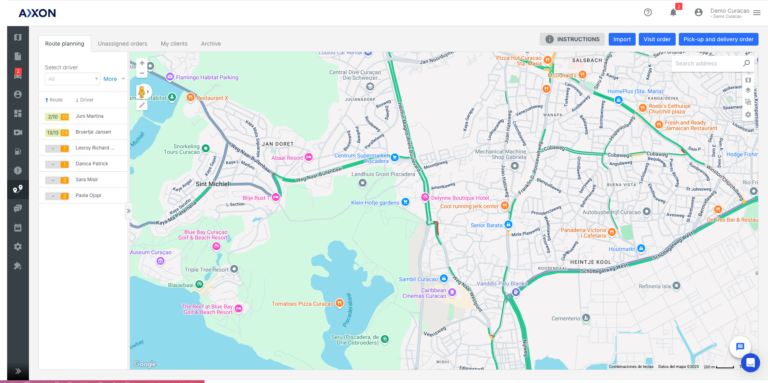Is Your Company Struggling with Slow Deliveries?
It's a story we all know too well – a customer waiting for their package, only to face disappointment from a late or missed delivery. This problem is a big reason for unhappy customers, lost sales, and bad reputations for businesses.
In today's fast-moving world, it's essential to get the delivery schedule right. When we do, we keep customers happy and our business grows. In this blog post, we'll share the secret to creating a smooth delivery schedule and how companies can improve slow deliveries.
Are you ready? Let's dive in and transform your delivery operations!
The Power of Fleet Management Software
In the world of deliveries, time truly is money. Whether your business involves delivering pizzas or medical supplies, slow deliveries can spoil your day. We can't ignore the fact that unhappy customers, missed deadlines, and extra costs are painful consequences of such delays. That's where fleet management software comes to the rescue, helping you streamline your delivery operations and stay ahead of the game.
Romar Trading in Aruba faced a challenge with drivers making unauthorized stops, resulting in theft and unnecessary overtime. However, with the help of fleet management software, they gained control over their drivers and resolved these issues. Another success story comes from Lovers in Curaçao, who struggled to satisfy customers due to missed visits and supply shortages. By using fleet management software, they improved route planning, ensuring all clients were visited punctually.
How Companies Can Improve Slow Deliveries
Companies can enhance their delivery operations by implementing the following strategies:
1. Invest in helpful software: Great fleet management software offers features like GPS tracking, route planning, driver behavior tracking, and vehicle upkeep. These can improve delivery speed and organization.
2. Plan delivery routes well: Smart route planning saves travel time, uses less fuel, and makes deliveries on time. Route planning software helps create the best routes for drivers.
3. Keep vehicles in good shape: Regular vehicle check-ups prevent breakdowns or accidents that could slow down deliveries. Maintaining vehicles helps make deliveries faster.
4. Train and monitor drivers: Teach drivers safe driving, good route navigation, and time management. Keeping an eye on driver behavior shows areas that need more training, making driving safer.
5. Improve communication: Have clear conversations between dispatchers, drivers, and customers. This helps everyone work together, make quick changes, and share updates on deliveries.
6. Use data analytics: Look at delivery data to find problems and ways to improve. Using data helps businesses make smart decisions to make deliveries better and faster.
7. Manage customer expectations: Give accurate delivery times and tell customers about any delays. This helps customers know what to expect and keeps them happy.
8. Track deliveries in real-time: Real-time tracking helps businesses watch deliveries, make changes if needed, and give customers up-to-date information.
9. Organize warehouse work: Good warehouse management, like inventory control and order picking, speeds up preparing orders for delivery.
10. Review and improve: Check your delivery work regularly, find ways to improve, and make changes. Keep looking for ways to make deliveries faster and better.
Implementing these strategies can help businesses reduce delivery times, improve efficiency, and ultimately, increase customer satisfaction.
Pain Points of Slow Deliveries and How Fleet Management Software Helps
Romar Trading and Lovers' experiences highlight just a few of the many challenges companies can face with slow deliveries. While unhappy customers, missed deadlines, and increased costs are significant concerns, there are other obstacles that can arise. Negative online reviews from dissatisfied customers can damage a company's reputation and deter potential clients. Missed deadlines can lead to lost opportunities and declining revenue, while extra costs may result from driver overtime or wasted fuel due to inefficient routes.
Fortunately, fleet management software is an invaluable tool that can help businesses overcome these challenges. With features such as GPS tracking, live data, fleet maintenance, communication tools, route planning, and temperature monitoring, businesses can refine their delivery operations and minimize inefficiencies. Ultimately, implementing fleet management software allows companies to save time, money, and improve customer satisfaction, even amidst these additional challenges.
If your company is struggling with slow deliveries, it may be time to consider implementing a fleet management software solution. Axxon can help you streamline your delivery operations and stay competitive in your industry, all while providing exceptional customer service and support. Don't let slow deliveries hold you back – Contact us!



